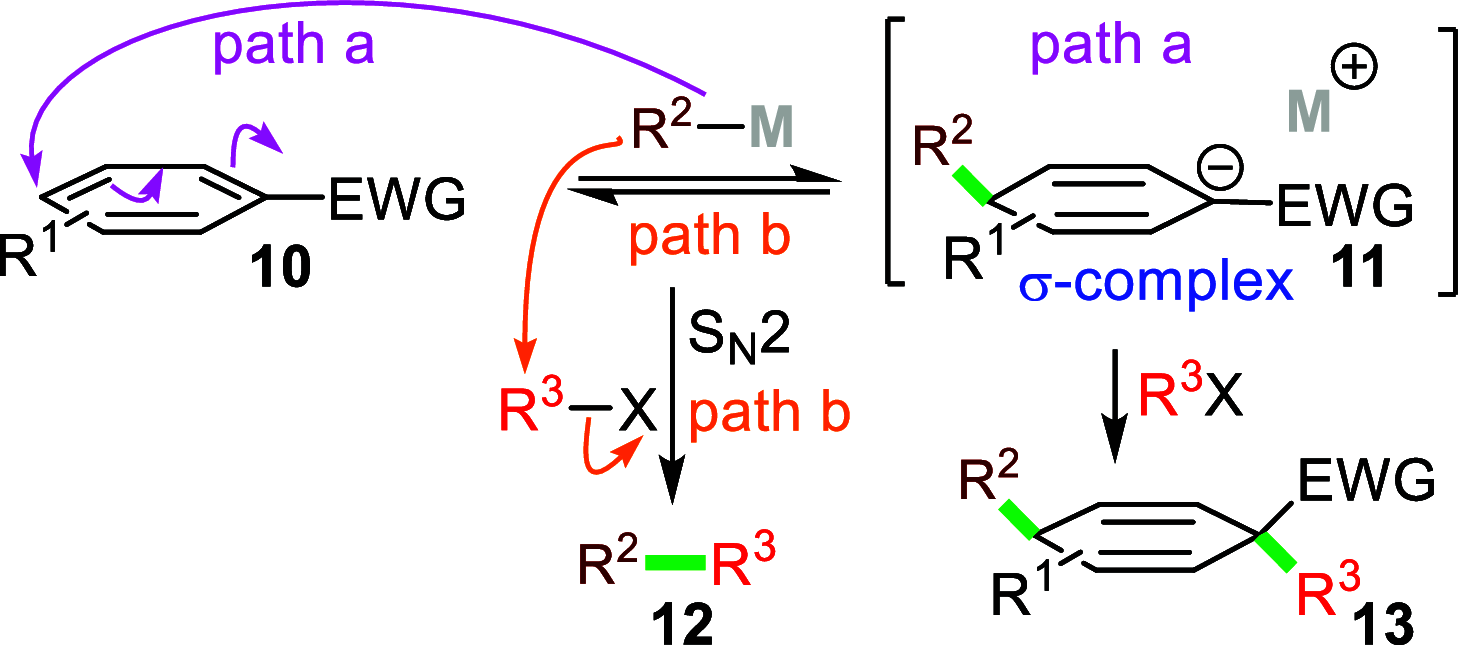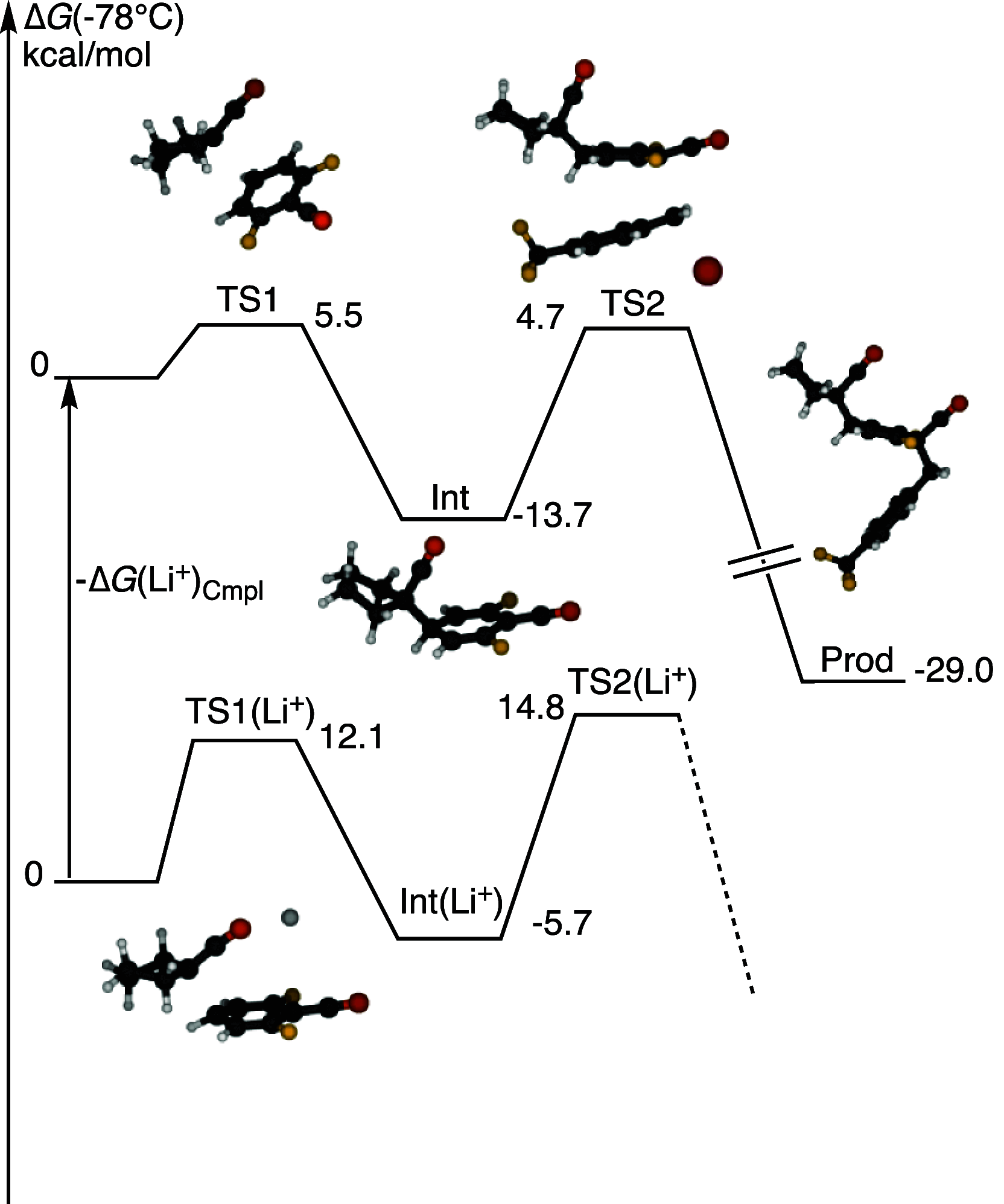Interrupted SNAr-Alkylation Dearomatization
- PMID: 38559710
- PMCID: PMC10976598
- DOI: 10.1021/jacsau.3c00813
Interrupted SNAr-Alkylation Dearomatization
Abstract
Dearomatizations provide powerful synthetic routes to rapidly assemble substituted carbocycles and heterocycles found in a plethora of bioactive molecules. Harnessing the advantages of dearomatization typically requires vigorous reagents because of the difficulty in disrupting the stable aromatic core. A relatively mild dearomatization strategy is described that employs lithiated nitriles or isocyanides in a simple SNAr-type addition to form σ-complexes that are trapped by alkylation. The dearomatizations are diastereoselective and efficient and rapidly install two new carbon-carbon bonds, one of which is a quaternary center, as well as nitrile, isocyanide, and cyclohexadiene functionalities.
© 2024 The Authors. Published by American Chemical Society.
Conflict of interest statement
The authors declare no competing financial interest.
Figures








Similar articles
-
Dearomatization of aromatic asmic isocyanides to complex cyclohexadienes.Nat Commun. 2022 Oct 28;13(1):6444. doi: 10.1038/s41467-022-33807-7. Nat Commun. 2022. PMID: 36307409 Free PMC article.
-
C- and N-Metalated Nitriles: The Relationship between Structure and Selectivity.Acc Chem Res. 2017 Oct 17;50(10):2556-2568. doi: 10.1021/acs.accounts.7b00329. Epub 2017 Sep 20. Acc Chem Res. 2017. PMID: 28930437
-
Alkenyl Isocyanide Conjugate Additions: A Rapid Route to γ-Carbolines.Angew Chem Int Ed Engl. 2017 Apr 3;56(15):4310-4313. doi: 10.1002/anie.201612574. Epub 2017 Mar 13. Angew Chem Int Ed Engl. 2017. PMID: 28295938 Free PMC article.
-
Dearomatization of C6 Aromatic Hydrocarbons by Main Group Complexes.Chemistry. 2023 Oct 23;29(59):e202301973. doi: 10.1002/chem.202301973. Epub 2023 Sep 5. Chemistry. 2023. PMID: 37535350 Review.
-
1,2,3,-Triazole-Based Catalysts: From Metal- to Supramolecular Organic Catalysis.Chem Rec. 2017 May;17(5):485-498. doi: 10.1002/tcr.201600104. Epub 2016 Oct 24. Chem Rec. 2017. PMID: 27775861 Review.
References
-
- Industrial Arene Chemistry: Markets, Technologies, Sustainable Processes and Cases Studies of Aromatic Commodities; Mortier J., Ed.; Wiley VCH: Weinheim, Germany, 2023.
LinkOut - more resources
Full Text Sources
Research Materials
